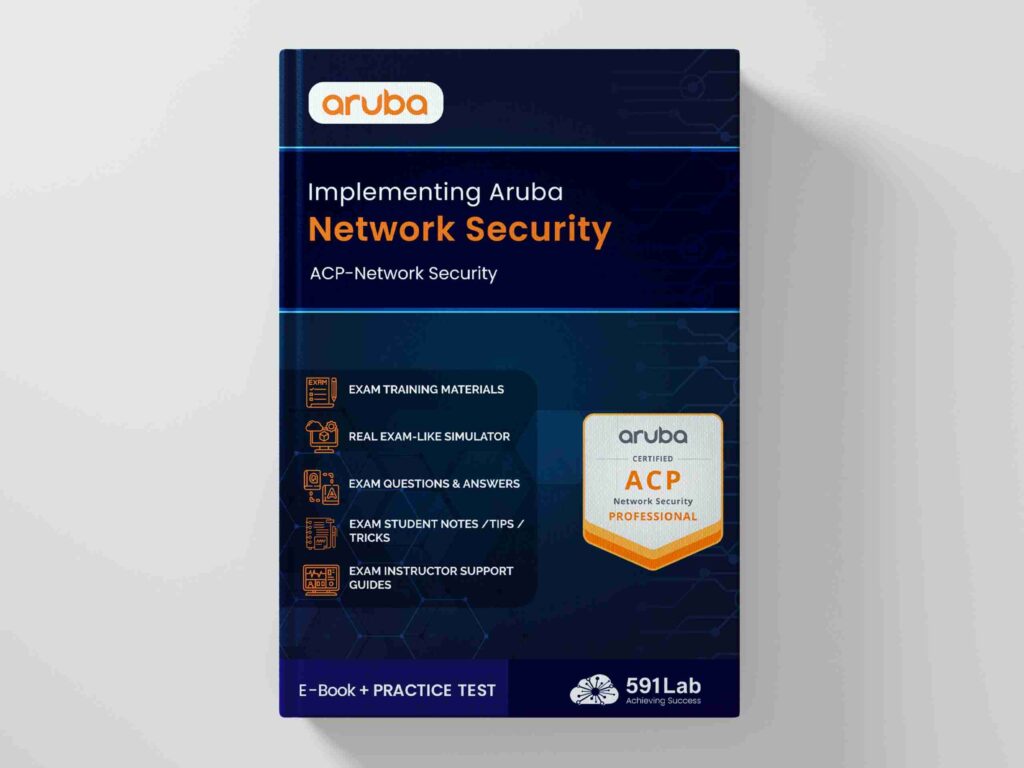In today’s hyper-connected world, mastering wireless and edge networking technologies is a strategic advantage—and Aruba Networks certifications offer an ideal path for IT professionals looking to stand out in enterprise networking, wireless mobility, and network security. Whether you’re pursuing the Aruba Certified Mobility Associate (ACMA), Aruba Certified Switching Professional (ACSP), or the advanced Aruba Certified Edge Professional (ACEP), the first major decision you’ll face is how to train: online or in a classroom?
Both formats have their unique benefits and challenges. In this blog, we’ll explore the key differences between online vs. classroom learning for aruba certification training, and help you choose the best method for your career goals, learning style, and schedule.

📚 Understanding Aruba Certifications
Aruba Networks, a subsidiary of Hewlett Packard Enterprise (HPE), offers a structured certification path for network engineers, IT administrators, and wireless specialists. These certifications are highly regarded, especially in enterprises using Aruba’s cloud-managed and edge-intelligent solutions.
The certification tiers include:
- Associate Level – ACMA, ACSA (Switching Associate)
- Professional Level – ACMP, ACSP
- Expert Level – ACMX (Mobility Expert), ACSX (Switching Expert)
- Specialist & Edge Certifications – Focused on ClearPass, SD-Branch, and Network Security
Choosing the right training format can make or break your success in earning these credentials.
🖥️ Option 1: Online Aruba Certification Training
Online training is rapidly becoming the preferred choice for many tech professionals—and for good reason.
✅ Advantages of Online Learning:
- Flexibility & Convenience
Study at your own pace, on your own schedule. Online Aruba training is ideal for working professionals or those with family responsibilities. - Cost-Effective
Online courses generally cost less than in-person classes. You save not only on tuition but also on travel, lodging, and time off work. - On-Demand Access to Resources
Many online platforms offer recordings, digital labs, practice quizzes, and downloadable content, which you can revisit as needed. - Global Accessibility
No matter where you are in the world, you can access Aruba training from top instructors or vendors like HPE Education Services, Pluralsight, or Udemy. - Practice Labs & Virtual Environments
Aruba provides online access to virtual labs (HPE vLabs), where you can work on real-world configurations and scenarios without physical equipment.
❌ Disadvantages of Online Learning:
- Limited Hands-On Guidance
If you get stuck in a lab or don’t fully grasp a topic, it can be harder to ask questions and get immediate, personalized help. - Requires Self-Discipline
Without a fixed schedule, it’s easy to procrastinate. Self-paced learning demands high levels of motivation and time management. - Less Interaction
You may miss the spontaneous discussions and peer learning that happen naturally in live classroom settings.
🏫 Option 2: Classroom-Based Aruba Certification Training
Instructor-led classroom training remains a strong choice for professionals who thrive in structured, interactive environments.
✅ Advantages of Classroom Learning:
- Real-Time Interaction with Instructors
Ask questions on the spot, receive immediate feedback, and benefit from the instructor’s real-world experience and teaching style. - Structured Schedule
Classroom training provides a clear timeline and accountability, which can help with consistency and momentum. - Networking Opportunities
Meet peers from different companies and industries. These relationships can lead to job referrals, partnerships, or shared learning beyond the course. - Access to Physical Equipment
Some Aruba classroom courses include direct interaction with real hardware, providing deeper hands-on experience.
❌ Disadvantages of Classroom Learning:
- Higher Cost
Instructor-led training is often significantly more expensive, especially when factoring in travel, accommodations, and missed work. - Limited Scheduling Options
Courses may only run on specific dates and locations, which might not align with your availability. - Less Flexibility
If you miss a session, catching up can be difficult. You’re also locked into the pace of the group.
🆚 Online vs. Classroom: Which One Should You Choose?
| Criteria | Online Learning | Classroom Learning |
|---|---|---|
| Flexibility | High | Low |
| Cost | Lower | Higher |
| Interaction | Limited | High |
| Hands-On Support | Moderate (virtual labs) | Strong (in-person labs) |
| Learning Style Fit | Self-directed | Structured |
📝 Final Thoughts
The decision between online and classroom Aruba certification training boils down to your personal learning style, budget, schedule, and career goals.
- Choose online training if you’re a self-motivated learner who needs flexibility and wants a more affordable option.
- Choose classroom learning if you thrive in structured environments, want real-time interaction, and can invest the time and money for a more immersive experience.
Regardless of the format, consistent practice, real-world labs, and reliable study materials are key to passing your Aruba certification exams. Remember, Aruba certifications don’t just validate your knowledge—they open the door to roles in wireless networking, SD-Branch, ClearPass security, and enterprise cloud edge deployments.
So, take the route that suits you best—and start building your Aruba-powered future today.
